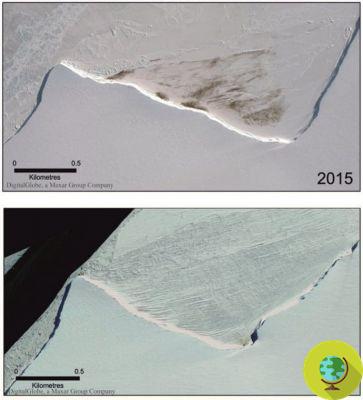One of the world's largest emperor penguin populations has almost completely disappeared, killed by climate change and melting ice in Antarctica
He is about to end up run over, his mother saves himOne of the world's largest emperor penguin populations has almost completely disappeared, killed by climate change and melting ice in Antarctica.
This is what emerges from one study conducted by scientists from the British Antarctic Survey (BAS) who monitored the emperor penguins living in Halley Bay through a series of very high resolution satellite images for two years.
Until recently, in fact, the colony was the second largest in the world, with the number of breeding pairs varying every year between 14.000 and 25.000, about 5-9% of the world population of emperor penguins.
But according to the scientists, in the last three years or since 2016 the penguins of the colony located in the Weddell Sea have not reproduced anymore.
Failure to raise chicks for three consecutive years is associated with changes in local sea ice conditions. In fact, penguins need stable sea ice to raise their young and this ice shelf must last at least from the arrival of the birds, from April to December.
For the past 60 years, sea ice conditions at the Halley Bay site have remained stable enough to support the life of these creatures but in 2016 the sea ice melted in October, long before all the emperor penguin chicks. could save themselves, causing on the one hand a mass death, probably by drowning, and on the other the flight of the reproductive couples.
Same thing happened in 2017 and again in 2018, leading to the deaths of almost all the chicks at the site every season.
The Halley Bay colony colony has now almost disappeared. Satellite images show the reduction in size of the Halley Bay colony in 2018 compared to 2015.

For the authors of the study, this is an "unprecedented period" of reproductive failure for penguins. The hope is that many have moved to the nearest colony, Dawson Lambtona 55 kilometers away, whose population has increased by 10 times, from about 2 to 15 breeding pairs.
Nonetheless, the news remains very worrying because until now researchers thought that this part of the Weddell Sea was relatively isolated from climate change.
"I thought the Weddell Sea would be one of the last places we would see all of this" he said co-author PhilTranthan.
The study was published in Antarctic Science.
READ also:
- Emperor penguins: the census comes from space
- Impossible loves due to climate change
Francesca Mancuso


























